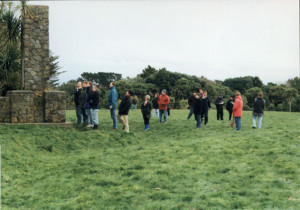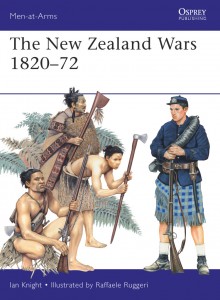Overview of the New Zealand Wars – Danny’s essay on the Te Ara website
Te Ara is the New Zealand government’s awesome National Electronic Encyclopedia and is a treasure trove of information about New Zealand. To see an overview of the New Zealand Wars written by Danny for the Te Ara website, click here # Overview Essay.
#
The New Zealand Wars – One War or Many?
Most historians see the New Zealand Wars as a ‘unified narrative’ comprising a single, integrated and sustained conflict that, with interruptions, lasted for some thirty years, from about 1843 at the earliest to 1872 at the latest. Opinions however vary as to when the wars actually ‘began’, and when they ‘ended.’
Some historians, particularly Māori historians, even argue that, looking beyond the wars just as ‘military engagements’ (which finished in 1872), the New Zealand Wars have never really finished.
However, with the military engagements in mind, it is not generally appreciated in New Zealand that we were on a war footing for so long, though the conflict between Māori people and European settlers has lasted much longer of course.
The New Zealand Wars, to most, suggests a series of related engagements unified into a conventional war, with any number of unifying themes emphasising common elements like participants, geography, outcomes and causes.
Others however see the wars as comprising many distinct and discrete engagements, with common elements over-emphasised, conflicts that can be connected but only tenuously.
Significant differences, for example, can be seen in the nature and purpose of the military engagements. During the wars, there were at least nine individual fields of engagement, each comprising a distinct time period (click here to see # Land Wars Timeline).
Māori participant groups and allies or opponents varied enormously. Landscapes and battle conditions, tactics, casualty rates, armaments and logistics differed greatly, as did the varying combinations of British Army, New Zealand Armed Constabulary and other settler contingents ranged against disparate tribal and hāpu fighting units.
 This significantly different view tends to be the view of Māori – that individual tribes or confederations were involved in battle on distinct tribal landscapes, in defence of distinctly tribal interests.
This significantly different view tends to be the view of Māori – that individual tribes or confederations were involved in battle on distinct tribal landscapes, in defence of distinctly tribal interests.
To others, however, the individual wars did definitely constitute an overall war. Much of the literature is predicated on the fact that the New Zealand Wars were a series of conflicts unified by many common and persisting elements.
Where the wars are perceived to have been a part of a whole, then, broad causes and overarching reasons for war are suggested, such as the loss of Māori customary land and authority, colonial settlement from 1839 and the impact of new settlers, and at the point where they came together – the Treaty of Waitangi of 1840.
The wars historiography on such issues, however, isn’t well developed in New Zealand. For most people, the New Zealand Wars is an appropriate name which conveys both difference as well as unity. In the end, as with all historical interpretations, it comes down to scholarly preference. For further on the historiography, click here – # ‘New Zealand Wars’ – What’s in a Name?
To see a map of these many yet inter-related fields of engagement, click here – # Map of Conflicts.
Huge thanks to Dr Richard Taylor of the New Zealand Army for discussing this issue at length with us. Richard’s PhD examined aspects of the British Army logistics during the wars – Richard Taylor, ‘British Logistics in the New Zealand Wars’, PhD thesis in History, Massey University, 2004.


